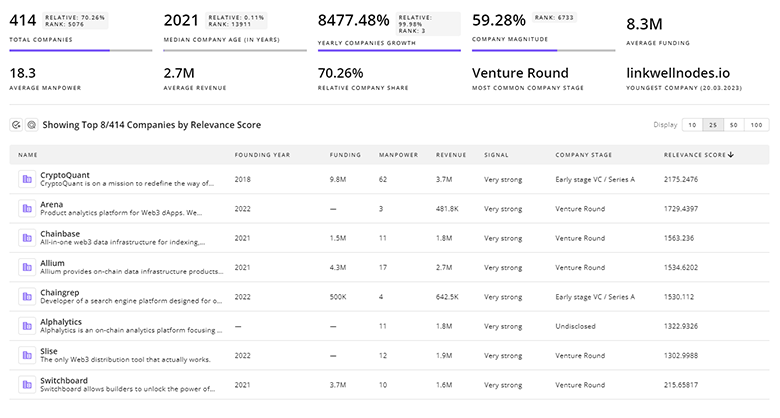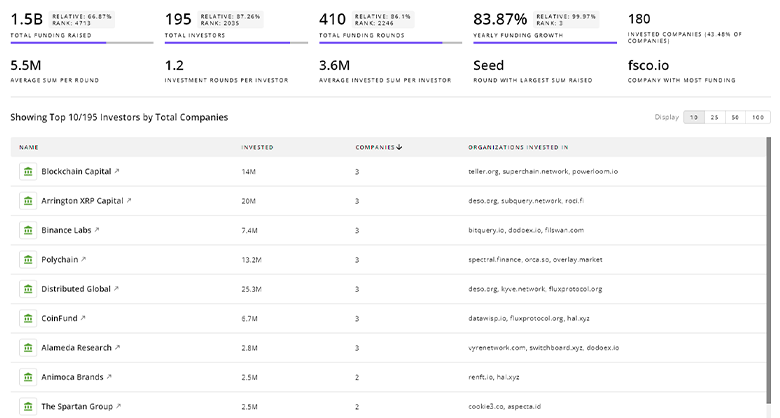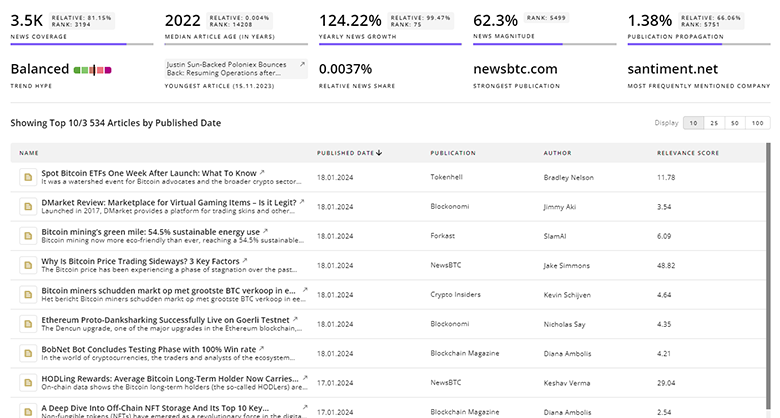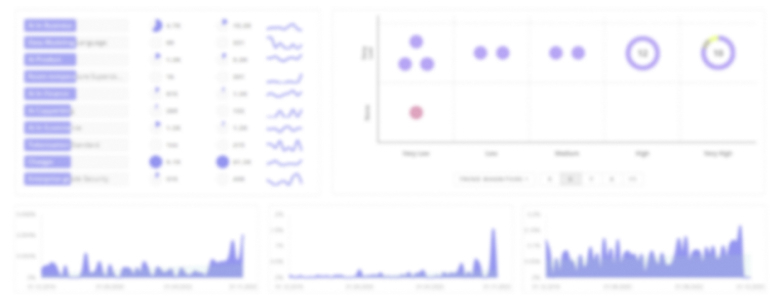
Carbon Capture Report
: Analysis on the Market, Trends, and TechnologiesThe carbon capture sector is shifting from pilots to industry-scale deployment: the internal trend data records a 2024 market size of USD 2.97 billion and an 8.05% CAGR signal for the next decade, while market forecasts published externally place near-term market values between mid-single and high single-digit billions, with longer-term scenarios that assume rapid DAC and CCUS roll-out projecting an order-of-magnitude expansion by the 2030s. This report synthesizes market forecasts, technology and patent trends, company capabilities, and funding flows to show where value will concentrate: (1) cost per ton and modular scalability determine winners; (2) integrated capture-to-storage platforms and cluster infrastructure capture the highest commercial upside; and (3) a parallel growth path of distributed, bio-integrated removal and mineralization provides complementary, lower-capital options for broad deployments (internal funding aggregate integrated into analysis).
We updated this report 62 days ago. Noticed something’s off? Let’s make it right together — reach out!
Topic Dominance Index of Carbon Capture
The Topic Dominance Index trendline combines the share of voice distributions of Carbon Capture from 3 data sources: published articles, founded companies, and global search
Key Activities and Applications
- Point-source capture at heavy industry (cement, steel, petrochemicals): retrofit and new-build post-combustion and oxy-fuel systems remain primary demand drivers because they address concentrated CO2 streams at lower per-ton cost than atmospheric removal.
- Direct Air Capture (DAC) for legacy emissions and corporate removal purchases: modular DAC units and emerging electrochemical/electroswing approaches target removals where point-source abatement cannot solve the problem.
- Bioenergy with Carbon Capture and Storage (BECCS) and biochar: negative-emission pathways that combine energy production or pyrolysis with permanent sequestration and soil benefits; these dominate high-quality voluntary removal deals (Carbon Capture Magazine coverage).
- Mineralization and construction-material pathways: converting CO2 into aggregates or cured concrete creates stable sequestration with product revenues that improve project economics.
- Transport and geological storage development (CO2 hubs, pipelines, saline aquifers): enabling infrastructure is critical to scale and to monetize capture through storage credits and compliance markets (Storegga / Porthos infrastructure projects).
Emergent Trends and Core Insights
- Policy and carbon accounting are the demand levers. Tax credits, ETS linkages, and corporate pre-purchase contracts create predictable revenue streams that de-risk capital-intensive projects (numerous policy and market analyses show rapid growth when incentives exist) (research overview).
- Modular, manufacturable capture units win investor preference. Investors and project developers prize technologies that scale via factory production rather than bespoke engineering at every site (evidence from multiple company and market profiles) ([company landscape funding synthesis — integrated in analysis]).
- Energy vector matters: electricity-driven capture (electrochemical / electroswing) and designs that can run on low-cost surplus renewables materially reduce operating cost per ton versus heat-intensive solvent loops (electrochemical technology trends in external analyses).
- Carbon-to-value as partial offset to capture cost: mineralization, building materials, and fuel synthesis create downstream revenue that improves capture economics for point-source projects.
- Verification and permanence dominate credit pricing: MRV quality, registry standards, and measurable permanence (geologic vs mineral vs nature-based) determine pricing and demand in voluntary and compliance markets (market studies and trade press report inflows to high-quality removal credits).
Technologies and Methodologies
- Post-combustion solvent absorption: mature, widely deployed for industrial flue gases; incremental solvent and process improvements continue to lower energy penalty (post-combustion market segment analysis).
- Solid-sorbent DAC (temperature or vacuum swing): modular units that focus on sorbent regeneration energy and cycle speed; several modular approaches aim to lower capex through mass production (patent surge noted in recent years).
- Electrochemical / electroswing adsorption: uses electricity directly for sorbent regeneration; vendors claim major energy reductions versus thermal regeneration (Verdox electroswing claims
- Mineralization / accelerated carbonation: converts CO2 into stable carbonates used in construction—value capture plus permanence improves credit fundamentals (Blue Planet, CarbiCrete activities).
- Enhanced rock weathering and biochar: nature-based removal approaches that scale via agricultural and forestry systems but require rigorous MRV and permanence protocols (policy initiatives).
- Cryogenic and membrane separation approaches: niche but attractive for high-CO2 streams or when very high purity CO2 is required for utilization (PMW Technology
- Digital MRV (satellite, IoT, AI): essential cross-cutting technology to certify removals and to support the price premium for high-integrity credits.
Carbon Capture Funding
A total of 879 Carbon Capture companies have received funding.
Overall, Carbon Capture companies have raised $114.3B.
Companies within the Carbon Capture domain have secured capital from 3.0K funding rounds.
The chart shows the funding trendline of Carbon Capture companies over the last 5 years
Carbon Capture Companies
- Remedium — Remedium develops a calcium-based sorbent (Limeloop) and an associated "carbon capture heat battery" that pairs sorbent regeneration with electricity price arbitrage to lower net capture cost; the company reports a sorbent lifetime CO2 capture advantage and claims reuse of spent material in cement clinker, targeting cement decarbonization where heat integration matters.
- MCi Carbon — MCi Carbon commercializes a platform that captures industrial CO2 and converts it into stable bulk materials for construction and manufacturing. Their model sells both sequestration and product value, directly addressing the "carbon-to-value" battleground that improves project economics in hard-to-abate sectors.
- Jord AB — Jord uses C4 grasses and pyrolysis to produce solid biofuel and durable biochar, combining soil regeneration with long-lived carbon storage. Their approach targets agricultural co-benefits and creates a dual revenue stream from energy and soil amendment credits, useful where ecosystem co-benefits improve adoption rates.
- Octavia Carbon — Octavia Carbon deploys DAC machines in Kenya, targeting regions with competitive energy and geological advantages; the company pursues localized DAC deployment to reduce capex and make removal more cost-effective in lower-cost geographies, exemplifying the distributed deployment model.
Gain a better understanding of 3.3K companies that drive Carbon Capture, how mature and well-funded these companies are.

3.3K Carbon Capture Companies
Discover Carbon Capture Companies, their Funding, Manpower, Revenues, Stages, and much more
Carbon Capture Investors
Gain insights into 2.8K Carbon Capture investors and investment deals. TrendFeedr’s investors tool presents an overview of investment trends and activities, helping create better investment strategies and partnerships.

2.8K Carbon Capture Investors
Discover Carbon Capture Investors, Funding Rounds, Invested Amounts, and Funding Growth
Carbon Capture News
Gain a competitive advantage with access to 23.8K Carbon Capture articles with TrendFeedr's News feature. The tool offers an extensive database of articles covering recent trends and past events in Carbon Capture. This enables innovators and market leaders to make well-informed fact-based decisions.

23.8K Carbon Capture News Articles
Discover Latest Carbon Capture Articles, News Magnitude, Publication Propagation, Yearly Growth, and Strongest Publications
Executive Summary
The data show a sector in transition: current revenue pools are concentrated in capture services and project development, but the decisive commercial battleground will be which technologies reach scalable, low-cost production and which organizations control integrated capture-to-storage value chains. Short-term winners will exploit policy incentives and hub infrastructure; medium-term value will accrue to firms that combine low marginal capture cost with credible permanence and MRV. Parallel, distributed nature-based and mineralization pathways will remain crucial for delivering mass removals where centralized infrastructure is slow to materialize. For business leaders, the strategic imperative is clear: allocate capital to options that (1) reduce cost per ton through manufacturability or downstream product value, (2) embed strong digital MRV to capture credit premiums, and (3) position the firm within regional CCUS hubs or as an essential supplier to them.
We seek partnerships with industry experts to deliver actionable insights into trends and tech. Interested? Let us know!











